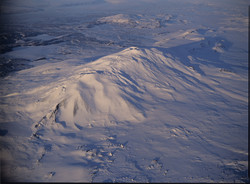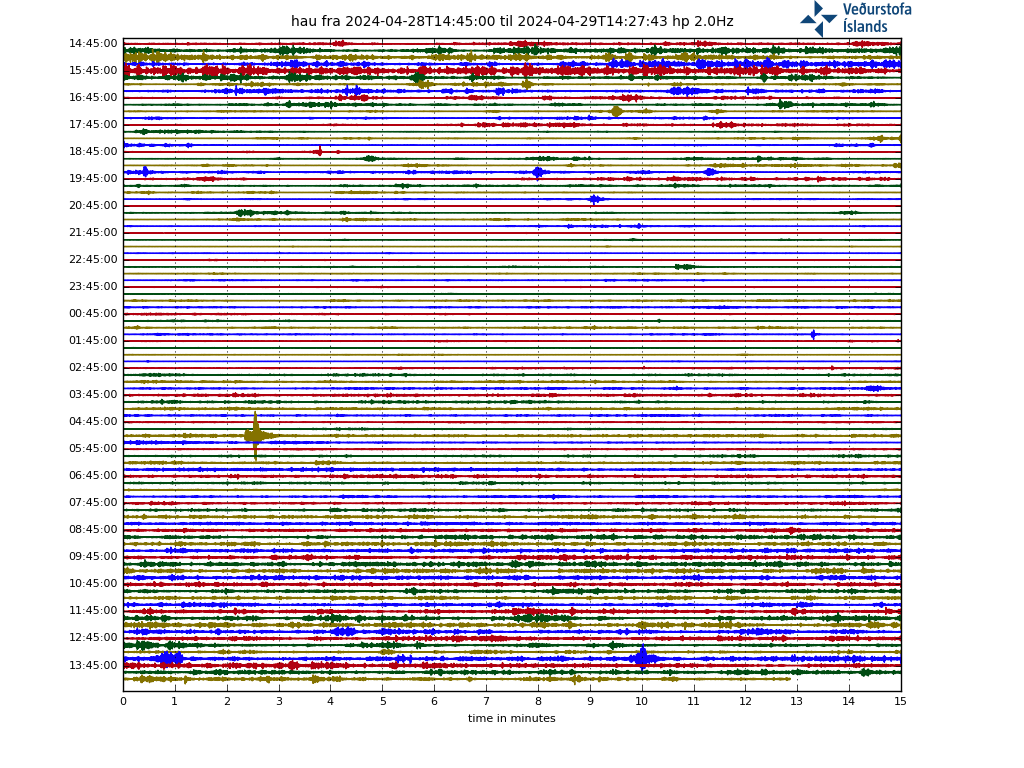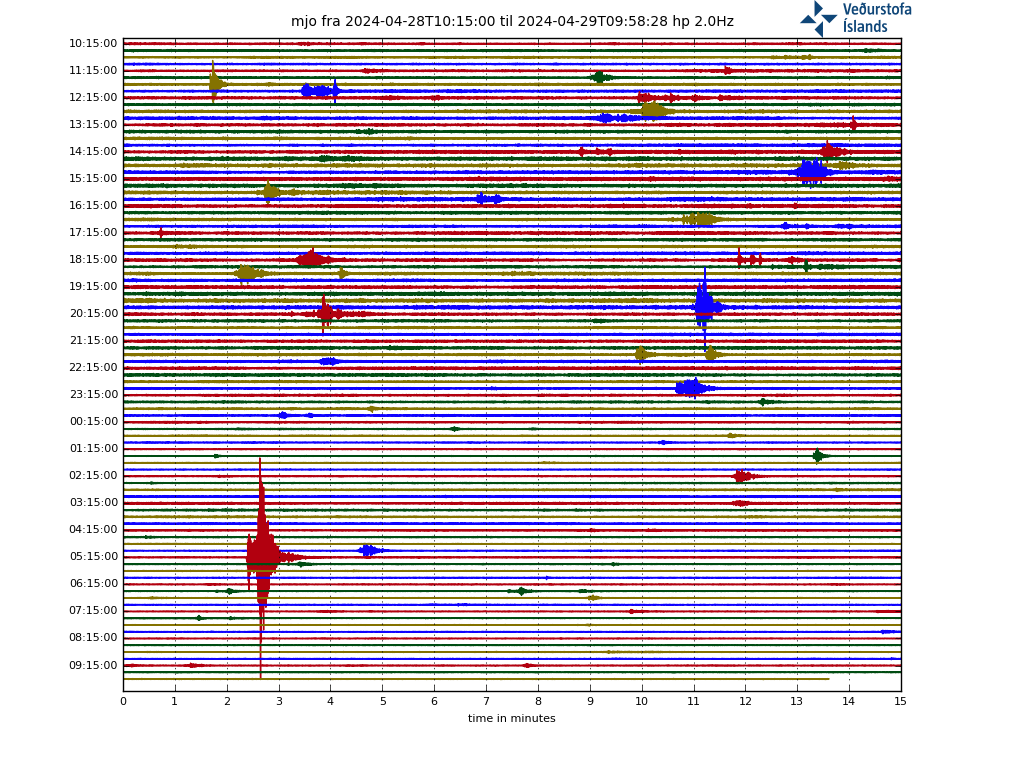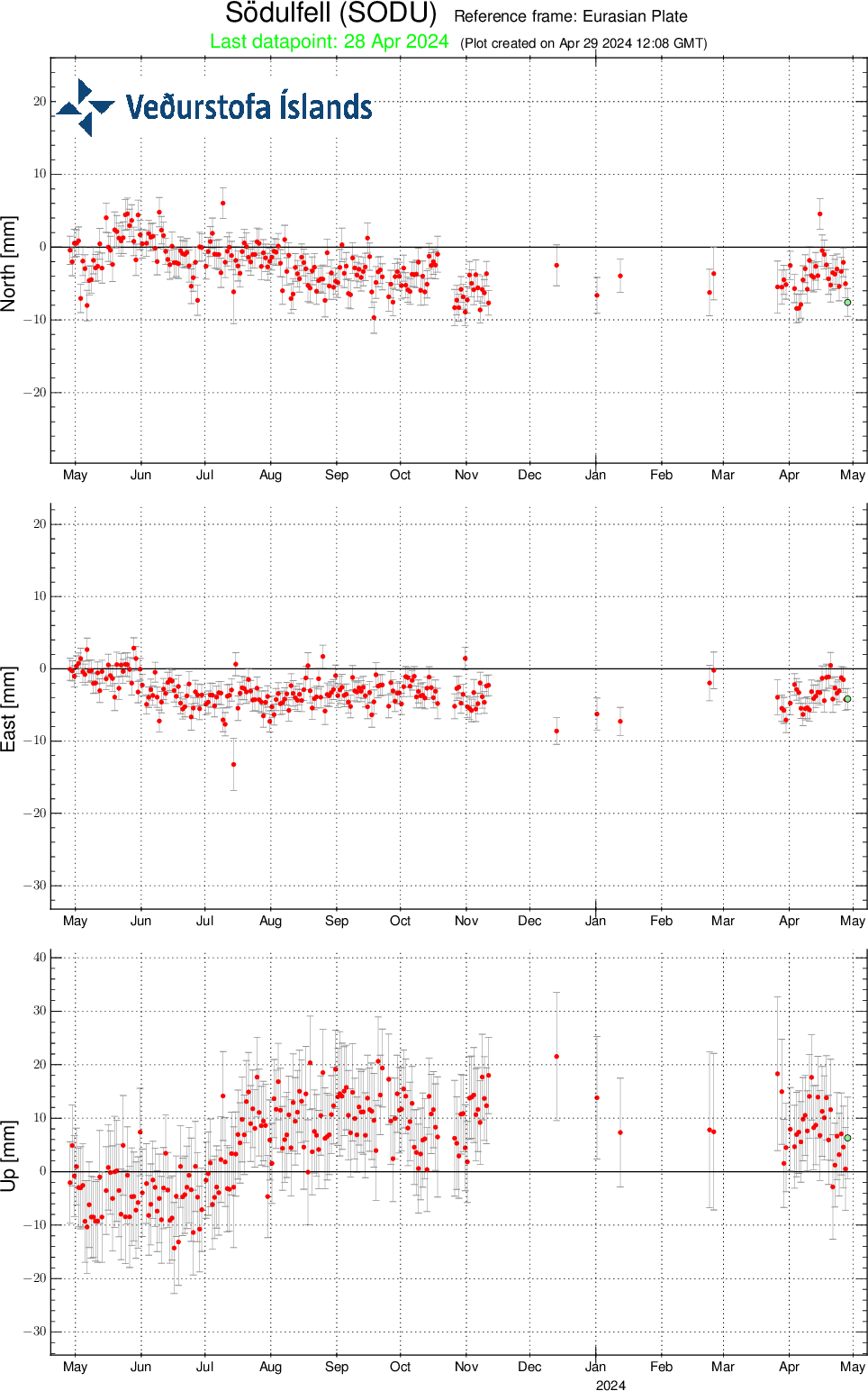Hekla
Hekla volcanic system is located on the Eastern Volcanic zone and consists of a central volcano rising to 1490 m.a.s.l. and is about 60 km long fissure swarm. The volcano has been highly active during Holocene and has erupted 23 times in historical time, with its last eruption occurring in 2000. It is considered the third most active volcano in Iceland. About 100 eruptions are known from the system in the past 9000 years, both effusive and explosive eruptions. The period 9000-7000 years ago was dominated by effusive basaltic volcanism, the period 7000-3000 years ago was characterized by infrequent but large explosive silicic eruptions at the central volcano and effusive basaltic eruptions. In the last 3000 years a mixture of both lava and tephra has been dominating.
The chemical composition of erupted material from Hekla changes with time during the eruption. The opening phase has the highest SiO2 content, and while the eruption is ongoing the SiO2 lowers. This explains why tephra layers from Hekla often have a light coloured base and a dark top, making ideal markers of the layers.
For more information on the Hekla volcanic system, visit Catalogue of Icelandic Volcanoes








